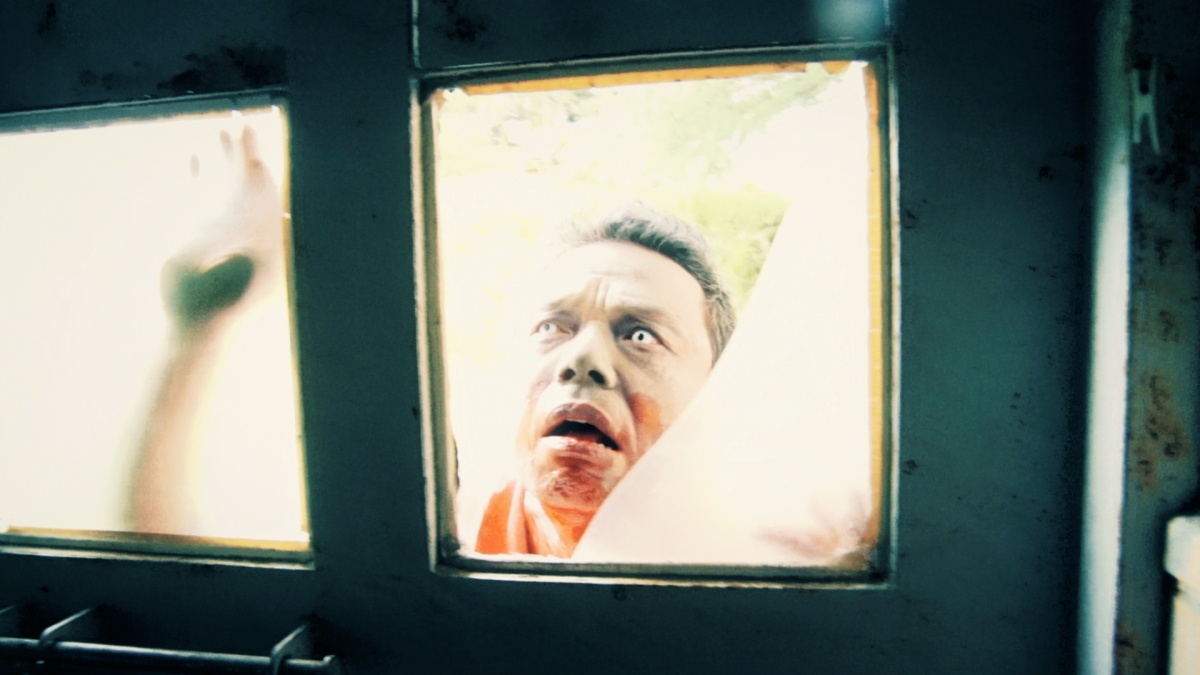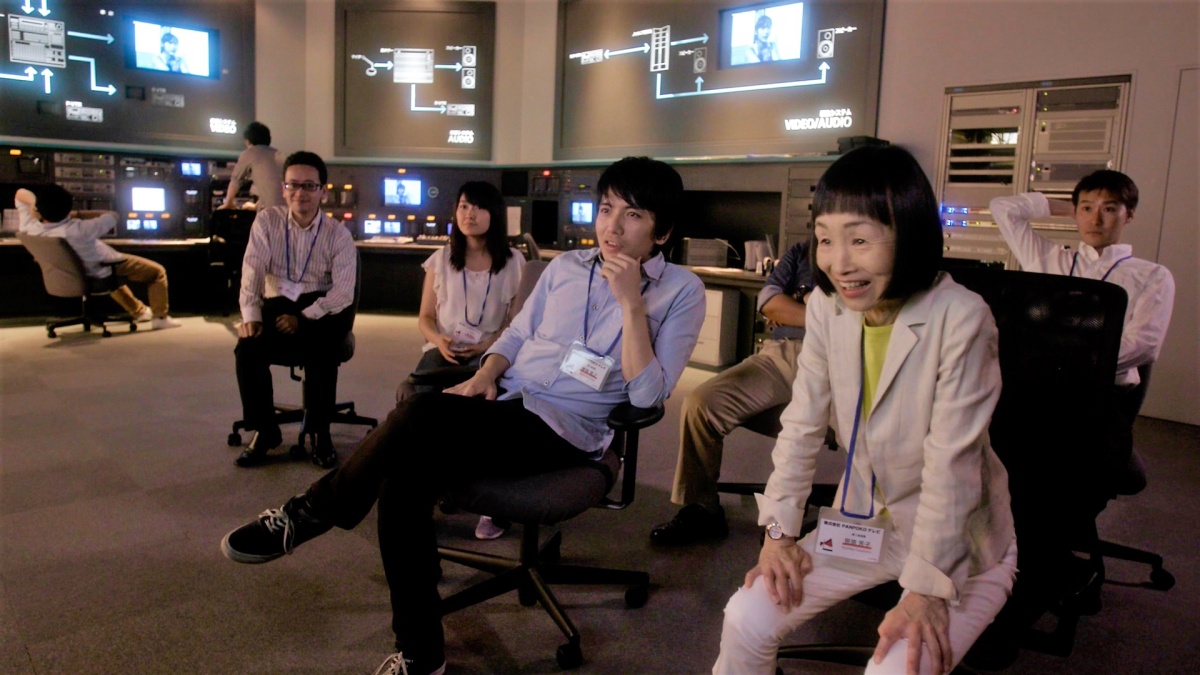How a Crowd-funded Indie Zombie Film from Japan became a Global Cult Success

From big-budget block busters to tiny indie films shot on a shoestring, the landscape of film is so vast that to stand out without a large financial backing seems all but impossible. In reality, it almost is. But Shinichiro Ueda bucked the odds. And beat them.
Image © ENBU Seminar
One movie that faced these overwhelming odds was the Japanese independent film, One Cut of the Dead. A zombie comedy created on a micro, yet largely crowd-funded budget, on paper the film was destined to join the ranks of thousands of other indie films with high hopes and low exposure released around the world. A fate of going unnoticed.
But with a heartfelt story and hilarious premise that elevated the production with originality and humour, it wasn’t long before One Cut of the Dead defied the odds and went on to become an internationally acclaimed success.
Humble beginnings
From start to finish, there is one man responsible for much of One Cut of the Dead’s success: Shinichiro Ueda.
Japanese film maker Ueda had previously made a number of short films prior to undertaking One Cut of the Dead, which he claims was inspired in part by "Ghost in the Box," a stage play by Ryoichi Wada.
"To combat this, Ueda turned to crowd funding to source the budget for his project."

Shinichiro Ueda - Image © PANPOCOPINA
With the script in hand, Ueda then set about finding the funds to get One Cut of the Dead made. But in the film industry, where so many people are trying to get their projects made at the same time, finding financial backing can be difficult, particularly without notable credits to your name.
To combat this, Ueda turned to crowd funding to source the budget for his project. He thought he could do it for ¥3 million, approximately $25,000 at the time.
To put this into perspective, the average cost to produce a major studio movie is in the tens of millions of dollars. In fact, it’s not uncommon to see Hollywood productions cost hundreds of millions when all is said and done.
Finding help to bring a vision to life
When budgets are low on a film set, production must be whittled back to its most skeletal form. There can be no wasted time or money. Film makers must find the most cost-effective way to bring their vision to life, and this often means doing business with other like minds within the industry.
Ueda enlisted the help of the ENBU Seminar drama school in Tokyo. For over 20 years, the institution has been a place for actors, producers, and directors to come together and hone their craft. ENBU Seminar not only came on board to produce One Cut of the Dead, but they also hosted a two-month acting workshop that Ueda used to cast the actors for the film.
With a production company in place and a cast of unknowns , Ueda was ready to begin shooting his very first feature. Neither he nor his cast and crew had any idea that it would defy all expectations.
Finding a location to bring the undead to life
Another hurdle faced by independent film makers with monetary constraints is locations. Even with the best script in the world, film is a visual medium, meaning the right backdrop is a must for breathing life into an idea.
Maintaining the low-budget mindset while also remaining on brand with the idea of a zombie film, Ueda set about shooting at an abandoned water filtration plant in Japan’s Ibaraki prefecture. This location’s gritty and dilapidated look of overgrown nature and time-worn machinery was perfect, offering plenty of internal and external areas in which to bring the undead to life onscreen.
A non-stop, 37-minute long scene

One Cut of the Dead - Image © ENBU Seminar
The entire film was shot in only eight days. An incredible feat for any film maker, regardless of resources. But even so, this wasn’t the most impressive aspect of Ueda’s production. One scene, in fact, was shot in a single take that goes for an entire 37 minutes. A gruelling feat described by Yuzuki Akiyama, one of the film’s lead actors, as “very enjoyable but also pretty exhausting”.
With filming on set wrapped, Ueda turned to editing, a process that would take another four months to complete. And with that, One Cut of the Dead was ready to be unleashed on the world.
A cut above the rest
Opening in a small arthouse theatre in Tokyo, One Cut of the Dead was initially scheduled to run for only six days. This is not an unusual situation for a micro-budget film, and it often represents the peak of the film’s life with audiences.
The film’s producer and president of ENBU Seminar, Koji Ichihashi, kept his hopes in check, stating at the time that the initial target for the film was 5,000 admissions. That would let the film break even on its investments. But while those who viewed it during the initial run seemed to enjoy it, One Cut of the Dead’s true success was yet to come.
Raves from domestic and international audiences

One Cut of the Dead - Image © ENBU Seminar
It was chosen for showing at the Udine Far East Film Festival in Italy, where it received a standing ovation and won second place for the audience award. That started the ball rolling: word spread about the brilliance of Ueda’s creation, which led to a wider release program, with the film on over 300 theater screens across Japan and selling more than two million tickets.
Including later international box office sales, One Cut of the Dead went on to gross $31.2 million worldwide, setting the film’s legacy in stone. Ueda had done the impossible, making back his movie’s budget 1000 times over while going on to win a slew of awards such as best director at the Mainichi Film Awards.
Bloody inspiring
With its hilarious, multi-layered story-telling approach to a bloody zombie survival flick, One Cut of the Dead has cemented itself and its writer-director as one of the purest examples of cinematic creativity and ingenuity.
Carving its way through to the top of an industry where money talks, Ueda has shown the world what is possible with little more than a great idea and the drive necessary to turn it into a reality.
A 100-percent rating on Rotten Tomatoes

One Cut of the Dead - Image © ENBU Seminar
Still in possession of a 100% rating on the notoriously ruthless Rotten Tomatoes website, where it is described as being “brainy and bloody in equal measure”, One Cut of the Dead has something for everyone. A film that will make you laugh, amaze you with its twist-like exposition and leave you nothing short of inspired by its meagre beginnings.


